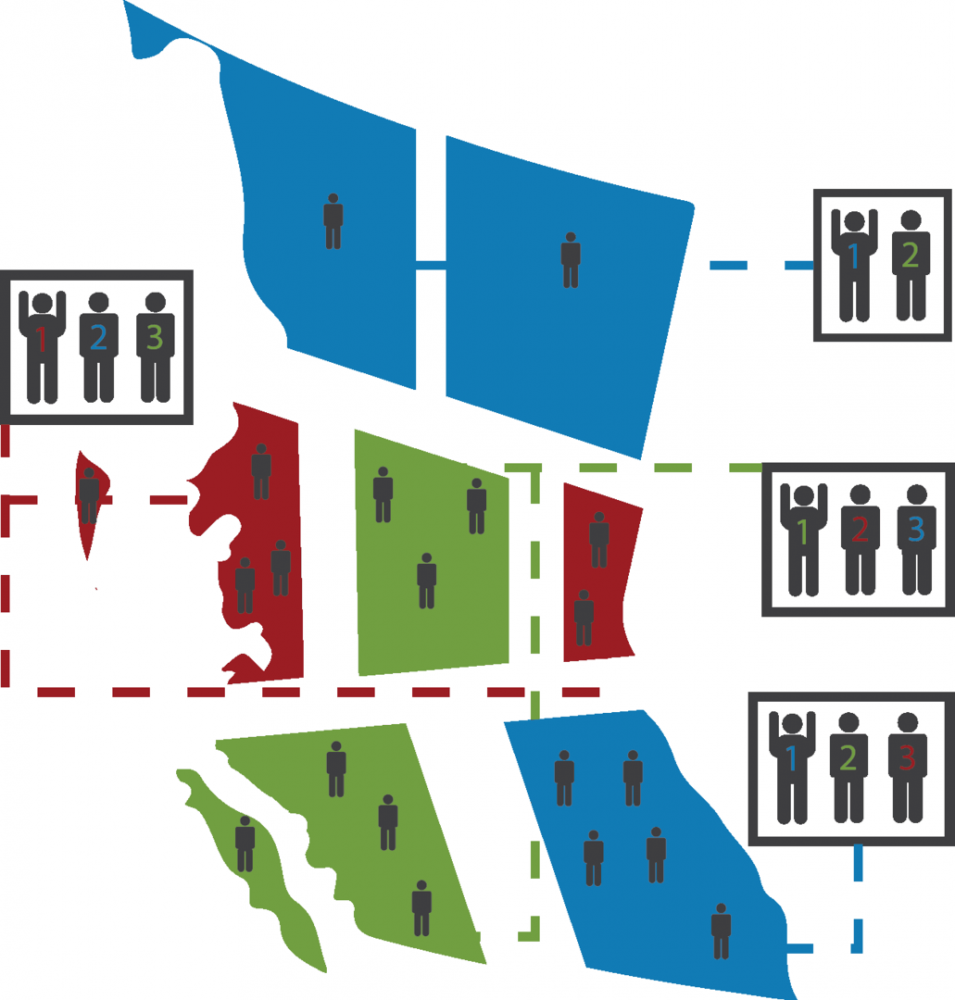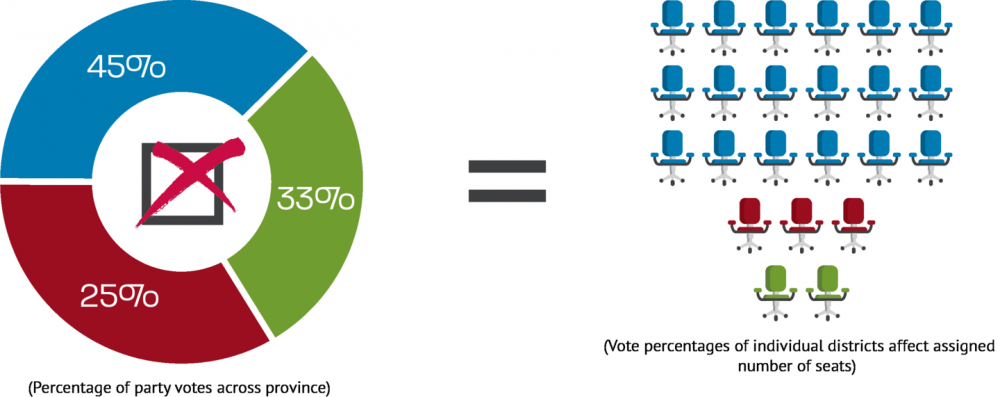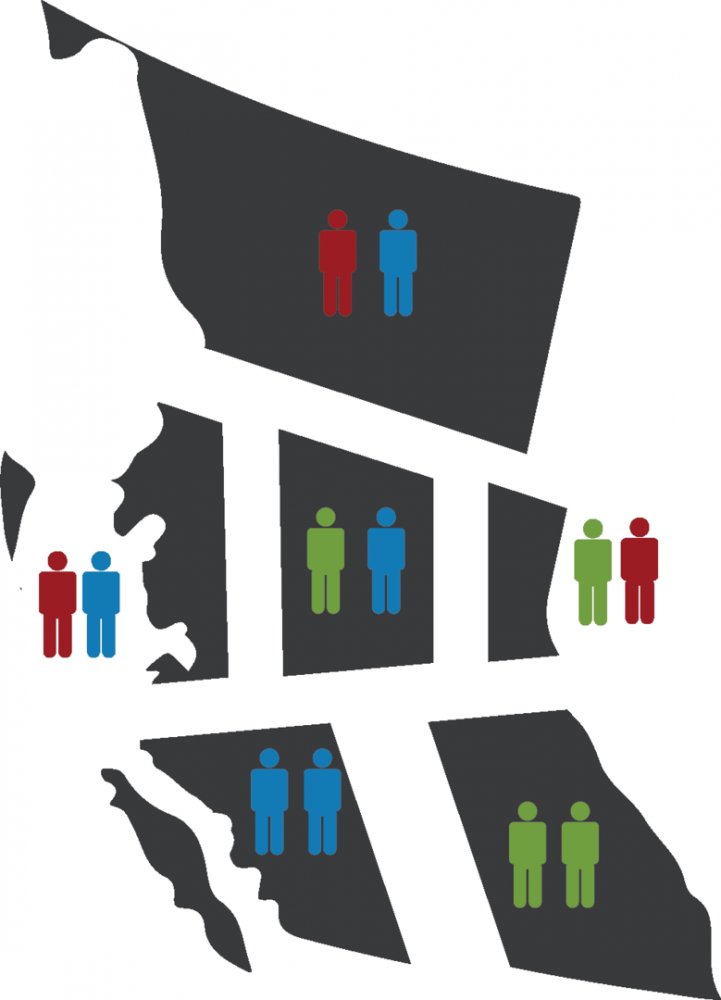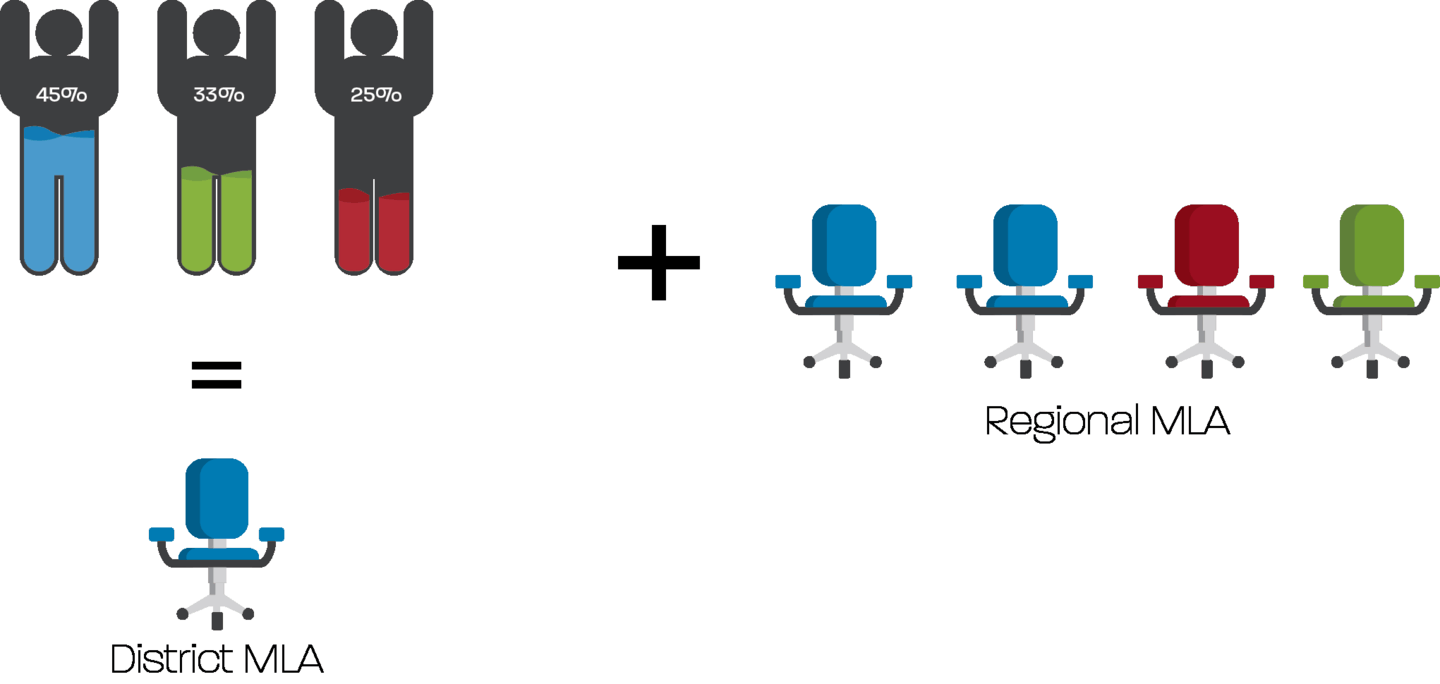 Réal Lavergne, president of Fair Vote Canada, told the Globe and Mail: “If you can order a coffee at Tim Hortons, you can vote.” That’s very accurate.
Réal Lavergne, president of Fair Vote Canada, told the Globe and Mail: “If you can order a coffee at Tim Hortons, you can vote.” That’s very accurate.
It looks like this: Do you want a coffee or not? If yes, do you you want cream and sugar, just cream, or just sugar?
Do you want a new electoral system or not? If yes, do you want dual-member proportional representation (DMP), mixed-member proportional representation (MMP), or rural-urban proportional representation (RUP)?
British Columbians are being asked to vote on the provincial electoral system. The referendum will be held via mail-in ballot, taking place between Oct. 22 and Nov. 9.
B.C. is hurting for a different voting system. According to the Province, 17 of the last 18 B.C. elections using first-past-the-post have resulted in a party holding the majority power, and holding less than 50 per cent of the vote.
Had the 2017 provincial election been based on the popular vote, the B.C. Liberals and B.C. NDP would have about 36 seats each, while the B.C. Green party would have been around 15, rather than what was determined, with Liberals taking 43 seats, NDP 41, and Green 3.
The idea of proportional representation is to award a party the number of seats relative to the popular vote. PR isn’t one system; there are many ways to achieve proportional representation. And although PR seems to be a better system for a province of B.C.’s size and makeup, two of the three proposed PR options have never been tried anywhere, and the other’s parameters haven’t been fully defined.
Dual-member proportional representation was developed in 2013 by Sean Graham, a student at the University of Alberta.
Under DMP, most electoral districts would be merged with a neighbouring district to create two-member ridings. Some larger rural districts might remain single-member.

You would cast one vote, but two candidates would be elected. The candidate with the most votes in a district (primary candidate) will fill one seat. The second seat would be filled by whichever party needs it to get the same percentage of seats as votes across the province, maintaining proportionality. According to the CBC, this system favours parties with the second most amount of votes for the secondary seat.
MMP is used in a number of countries including Germany and New Zealand. If implemented in B.C., ridings would increase by 50–100 per cent and voters would vote for one candidate. Regions would then allocate seats to candidates from a party list based on the popular vote across B.C.
 This is the only system out of the three that has been used elsewhere and is the simplest to explain; however, the proposal, outlined by the province, leaves out important details. Do voters vote once, or twice (a vote for a local candidate and a vote for a party)? Can candidates run in a riding and be on the party list?
This is the only system out of the three that has been used elsewhere and is the simplest to explain; however, the proposal, outlined by the province, leaves out important details. Do voters vote once, or twice (a vote for a local candidate and a vote for a party)? Can candidates run in a riding and be on the party list?
Under RUP, MLAs in urban and semi-urban areas are elected through a single transferable vote method (STV) where voters rank their preferred candidates from a much larger list. These ridings would have several MLAs and ballots could have dozens of candidates.
Rural areas would use an MMP system with both direct representatives and proportional representatives.
The STV method attempts proportional representation by having voters rank multiple candidates. Seats within a region are allocated based on the popular vote, to reflect the vote of the region.
British Columbia attempted two vote referendums in the recent past, in 2005 and 2009. Both were held in conjunction with the general election. Voters were asked whether the province should stay with the first-past-the-post electoral system or replace it with the BC-STV, a B.C.-specific STV system. Over half, 57.7 per cent, voted in favour but the threshold was set at 60 per cent. In 2009, the BC-STV lost more support, with only 30.1 per cent voting in favour.
Both the Green and NDP parties campaigned for proportional representation in the 2017 provincial election. Both would probably gain from it.
Registered voters will be mailed a voting package. You can register and request to vote online through elections.bc.ca. You can also find more information there.


